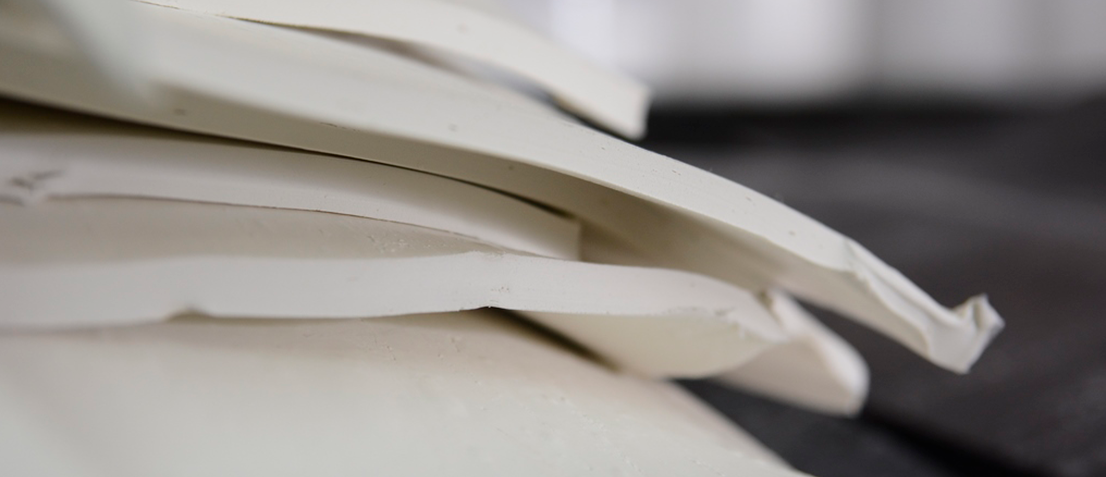Finding the right elastomer for an application is not as simple as choosing a red, black or white sheet of paper. Nitrile Butadiene Rubber (NBR) and other elastomers have their own features and abilities; therefore, it is essential to know the features of an elastomer and application demands to create an effective, long-lasting match.
 Nitrile sheet rubber is commonly used in the automotive and aeronautical industries, in which this elastomer is highly valued due to its resistance to oils and certain types of fuels. Only available in black or white, nitrile gives priority to functionality over aesthetic appearance. It is very popular because it will work when and where most other rubbers simply cannot.
Nitrile sheet rubber is commonly used in the automotive and aeronautical industries, in which this elastomer is highly valued due to its resistance to oils and certain types of fuels. Only available in black or white, nitrile gives priority to functionality over aesthetic appearance. It is very popular because it will work when and where most other rubbers simply cannot.
Below we share with you a comparison between NBR and some other elastomers:
NBR. vs. Natural rubber at first sight, these elastomers may look like identical twins. They both have great physical properties which include high resistance to traction, low compression and good resistance to abrasion. They even share the same properties of resistance to UV rays, ozone and excessive heat. However, NBR rubber has an advantage over natural rubber: its resistance to oils, greases and other fuels.
NBR vs. chloroprene (CR) no other elastomer can keep its stability when exposed to oil, grease and fuels like nitrile and neoprene. Regarding other properties, CR generally surpasses NBR, including high resistance to ozone. However, nitrile elastomer has higher resistance to compression and a lower price, which is why it is a more affordable option.
NBR vs. styrene-butadiene rubber (SBR): the key distinctive feature is that NBR is oil resistant. If you need a rubber product that will come in contact with petroleum byproducts and have constant abrasion, then NBR sheets are perfect for the task.
NBR vs. ethylene propylene diene monomer (EPDM): of all natural and synthetic elastomers available, natural rubber, NBR and SBR are the least tolerant of outdoor factors. When exposed to UV rays and ozone, they become dry and brittle. EPDM does not lose its integrity in outdoor conditions; it performs best in the outside. However, it cannot compete with NBR when it comes to oil resistance.
NBR vs. silicone: silicone is widely known for tolerating temperature. Compared to NBR, it lacks some essential physical traits, such as resistance to traction and abrasion. Regardless of this fact, it is common to find silicone and NBR used for joints and sealing materials. White nitrile and white silicone are often chosen for food use applications. The latter also provides aesthetic functionality, as it can be produced in several colours.
NBR Applications
Apart from automotive applications, nitrile sheet rubber components can be found in food processing and industrial equipment. Even though the elastomer is highly oil resistant, NBR continues to be used for its physical and mechanical qualities that coincide with the ones of many other elastomers. In general, NBR is a great elastomer and will remain an industry favorite for many decades.





